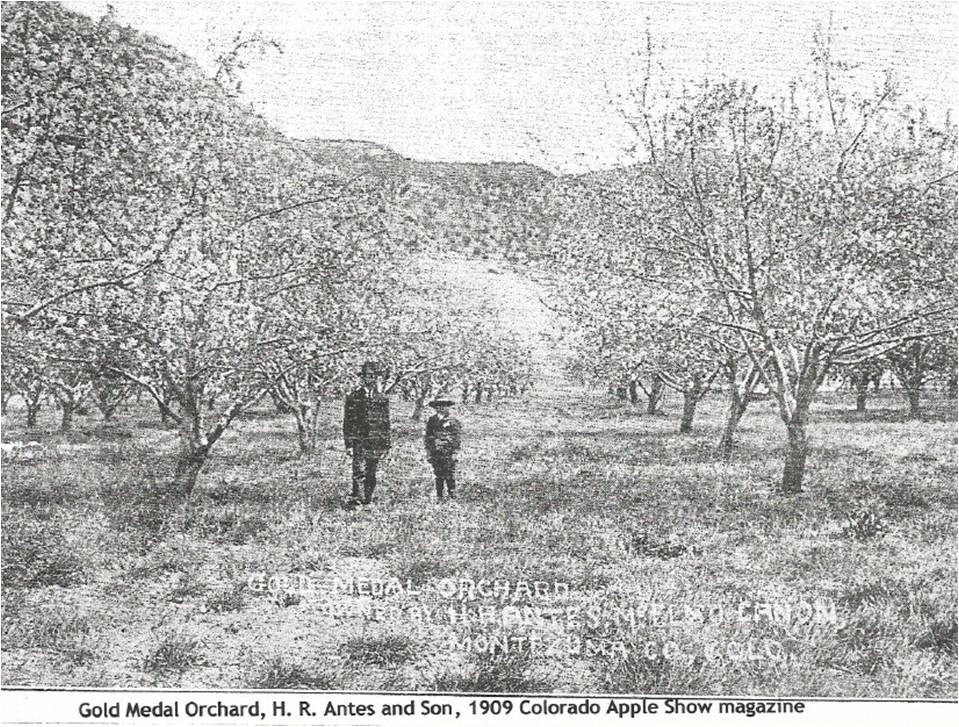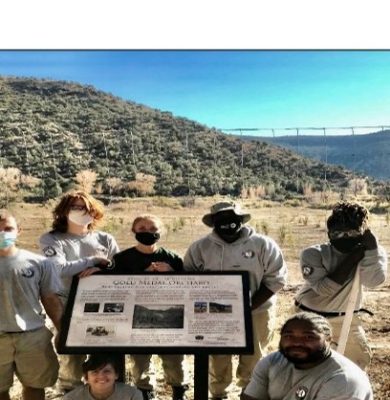Year Listed: 2015
County: Montezuma County
Construction Date: Orchard originally planted 1890
Threat When Listed: Development
Status: SAVED
Video courtesy of CBS4
Historic Preservation is much greater than the preservation of important buildings; it includes the protection of important cultural landscapes. Like historic buildings and districts, cultural landscapes provide a sense of place and identity often consciously designed and evolved through use. Historic landscapes include gardens, parks, scenic highways, rural communities, cemeteries, battlefields, and others. In 2015, the EPP highlighted an agricultural landscape through the Gold Medal Orchard.
The world came to St. Louis in 1904 to celebrate America’s progress over the century since the Louisiana Purchase. Covering 1,240 acres, St. Louis’ World’s Fair doubled the size of the 1893 Chicago World’s Fair and drew crowds of over 20 million. At the Palace of Agriculture, Colorado proudly exhibited the fertility of the state presenting potatoes from Greeley, cantaloupes from Rocky Ford, and the fruit of Montezuma County. Out of the competition, an orchard from Montezuma County established national recognition, receiving a gold medal for its excellent fruit varieties. As a result of the gold medal, the name of the orchard changed from Kadesh Orchards to the Gold Medal Orchard.
Planted before 1900 by James T. Giles and later owned by Reverend Howard R. Antes, the Gold Medal Orchard was at one time among the most famous orchards in Colorado. Today, the property stands as one of the earliest planted commercial orchards in the county (in use since 1900) and nearing qualification for a Centennial Farm status. The orchard has a long history with early Colorado orchardists who dared to make a living in these rugged and remote locations. Several of its fruit varieties can be traced to the orchard of well-known pioneer Jessie Frazer of Florence, Colorado whose original stock he brought from Missouri by wagon in the 1860’s. The surviving trees of the Gold Medal Orchard provide a living link to Jessie Frazer and his family. [Jessie’s surname has had several spellings. He signed his portrait published in History of the Arkansas Valley, Colorado, Chicago, O.L. Baskin & Co. 1881, as “Frazer,” which we recently discovered. We have chosen to use Frazer. Jude, please correct us if we are wrong.]
The story of the Gold Medal Orchard is also closely tied to the development of Colorado’s irrigation and water rights. The orchard is connected to another one of our Most Endangered Places, the McElmo Creek Flume, listed in 2011. Montezuma Valley Irrigation began developing an irrigation system for the area in 1885, which created a network of flumes and canals that extended over 150 miles. McElmo Creek Flume is one of these remaining structures that brought water to many of the county’s farms but did not serve the agriculture of McElmo Canyon.
A few years ago, the once expansive award-winning orchard stood overrun with rabbit brush and sage; a mere 6.7 acres of mostly feral land with only a few remaining historic trees. With the property in danger of being redeveloped and its history forgotten, the owners initiated their vision to bring the heirloom varieties of fruit back to Montezuma County by reestablishing the orchard with the help of the Montezuma Orchard Restoration Project.
Restoration of the orchard’s historic landscape will provide a living representation of the early agricultural founding of Montezuma County and highlight the importance of apple growing in the area. According to the Agricultural Census, in 2012 Montezuma County had 66 orchards as compared to 699 in 1925. Future plans for the site hope to preserve the heritage fruit tree varieties, become a source of genetic material to replant other orchards, and serve as a repository for the history of agriculture in Montezuma County and the Western Slope.
The Gold Medal Orchard has moved forward a great deal since its Endangered Places listing. The Restoration project has secured water rights for the land and built new interpretive signage. Initial plantings have already occurred, oral histories are being recorded, Montezuma County grafting is continuing, and a protective fence for deer has been added to the property. Meetings with the next generation of property owners have occurred to ensure a long, successful future of the orchard. The site still hopes to acquire a conservation easement but has been declared a save by CPI as of 2021. CPI continues to promote and honor the orchard’s progress into the future.
Additional Links:






